HPE’s Bill Philbin On InfoSight's AI VMware Advantage
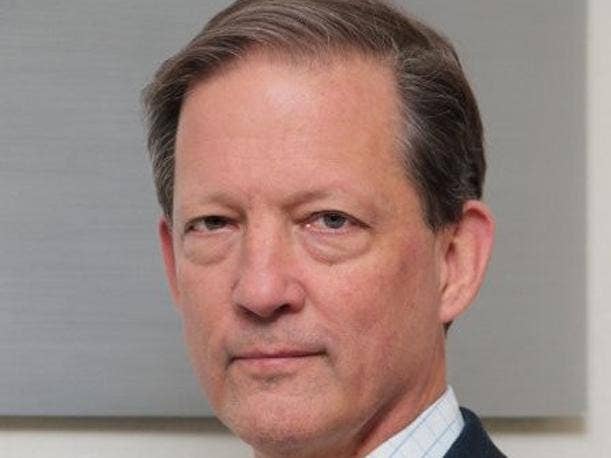
HPE Brings Its AI InfoSight Software To ProLiant, Synergy And Apollo Server
Bill Philbin, the eight-year Hewlett Packard Enterprise storage veteran tapped to drive InfoSight across the HPE hybrid portfolio, says that putting the artificial intelligence-based software for the first time on HPE servers provides channel partners competing with other system makers a major competitive advantage.
"This allows us to differentiate our server offerings from others out there," said Philbin, senior vice president and global chief technology officer for Hybrid IT for HPE. "As we take this into the portfolio and we look at combining server and storage together in a virtualized environment, the customer is going to get net-net a better experience on HPE than anywhere else."
HPE partners, for their part, said they expect to see the same kind of dramatic increases in resolving issues automatically and cost savings in servers that they have already seen in storage environments as a result of the robust InfoSight analytics and recommendation engine.
HPE has touted an 86 percent proactive reduction in storage issues along with a 79 percent decrease in storage IT operating expenditures for customers using InfoSight in storage environments. "Imagine if you take the efficiency that InfoSight has delivered on storage and you see the same gains in servers?" said Philbin, speaking about the return on investment customers will see from the InfoSight server offerings. "That's the whole idea behind this."
HPE InfoSight on ProLiant server, Synergy compute modules and Apollo systems—which require a software subscription—will be available starting in January 2019.
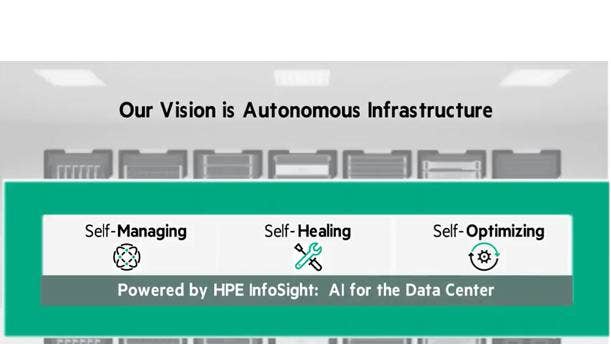
Can you talk about the importance of bringing InfoSight to servers—ProLiant, Apollo and Synergy—for the first time?
When we purchased Nimble close to two years ago, one of the statements of direction that we talked about was leveraging InfoSight across the portfolio.
The reason we started with servers after storage is servers are the basic building block for all of the other solutions we are providing. Whether it is Synergy or converged storage solutions around SAP HANA, SimpliVity—all of those solutions build upon the basic server building blocks.
We intentionally chose servers as the next to go after storage because it is the basic building block of InfoSight across the whole portfolio.
This allows us to differentiate our server offerings from others out there. As we take this into the portfolio and we look at combining server and storage together in a virtualized environment, the customer is going to net-net get a better experience on HPE than anywhere else.
How big an opportunity is this for partners to change the server sales conversation?
This gives partners the opportunity to start talking about what customers really want to talk about, which is applications and applications deployment.
Customers don't want to talk about flex capacitors and iOps. What they really want to talk about is how rapidly they can deploy applications and how does that application change the business and what can they do to accelerate application availability? InfoSight provides our customers with that secret sauce.

Can you talk specifically about how InfoSight changes the sales conversation?
What customers want to hear about is how the infrastructure they are purchasing is going to deliver on the promises they need, which is an uptime SLA (service-level agreement]. If you think about an average partner or IT organization, the complexities of running that have gotten worse—not better.
This allows us to have a much richer conversation with the customer around guaranteeing application uptime availability. With InfoSight we can look at what is going on in your IT shop and then compare that result to everyone else using a similar environment and application. We can benchmark whether or not customers are achieving and receiving the maximum results.
The best way to think about it is in the same way we use GPS applications and products like Waze, which allow us to take advantage of global learning with everyone on the same path. InfoSight provides that same capability for all our customers within the data center and partners can actually talk about a much richer experience and guaranteed uptime and availability based on the strength of InfoSight.
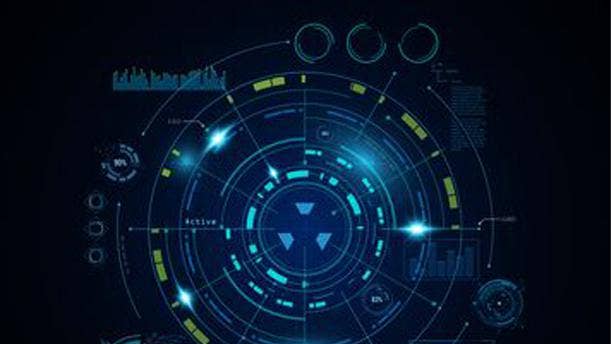
Can you talk about the Active Health System for servers that is now part of InfoSight?
Active Health has been around for a while. We use it primarily as support with diagnose and debug capability. When a customer is having a problem, they can upload into an Active Health System log that we have collected. What we have done is rather than having an overt act from customers, we are now collecting that data automatically and shipping it home. That is the same way we do it with our storage platforms. Number two, we have taken that data and we are now doing real-time analytics on the data as it is coming inbound a la InfoSight and Nimble and then providing that information back to the customer via the InfoSight portal. The unique ability here is interrogating [HPE] iLo [Integrated Lights Out remote server management functionality], gathering data, shipping it and running a set of AI models against it and then advising customers of the outcome.
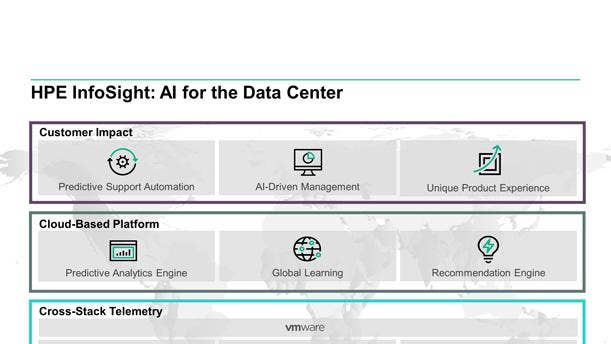
What are the predictive analytics capabilities you are bringing to VMware storage and server environments with InfoSight?
What we do is tunnel up into VMware and we bring back interesting statistics. We can trace today in reverse order from storage through the network to the server to the hosts that are running on the server. That gives us a unique set of telemetry. Native to the customer's installation we can pick up noisy neighbors or VMs that are consuming a lot of their infrastructure. Number two, we can take that data and apply it to all the other customers running a virtualized environment. There is a story that goes back to Nimble [with a 10-year installed base of customer data] where we determined that there was a set of customers who were receiving more latent performance did not have the right switch settings turned on in ESX [VMware's enterprise hypervisor]. By going back and communicating that to all the impacted customers because we received that telemetry inbound from VMware, we actually improved the lives of customers who in some cases didn't actually know they had a problem.
How powerful is the InfoSight predictive analytics software?
The whole thing about predictive analytics is that it is not just about the easy thing—there is a disk drive that is going to fail or memory that is going to fail. It is how do you do the really hard stuff like predicting usage patterns in the future, predicting latency issues before customers really realize it?
It is sort of like an HMO. It is preventive maintenance—which we are all encouraged to do—so bad things don't happen in the future. The way you do that is you apply AI against it. The other thing you do is you put subject matter experts on it. We have data scientists just like you would see at a car company doing autonomous vehicles. We have data scientists who are looking at the data, looking at the outliers and determining outcomes for customers.
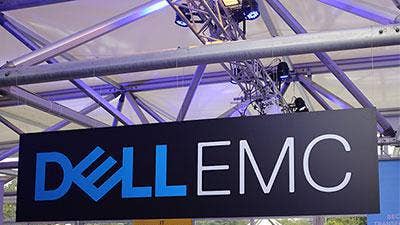
How is this different than what Dell EMC might do with VMware?
A lot of people will talk about telemetry coming home. That is not hard. What is really hard is what InfoSight does with 300 trillion data points that we are using on Nimble alone that are used to reference issues within the customer base, looking for outcomes for our customers. We don’t have Level One and Level Two services support for Nimble. Ninety-five percent of our upgrades are done during the day.
So one of the big problems partners have in selling this really complex infrastructure is they have to figure out how to support it. Oftentimes I would argue that those partners are not necessarily paid completely for their effort. We have automated that and now partners can really think about the value- added services they can provide customers. There is no more fire-fighting. It is about being a strategic adviser to customers. It is the difference between an ER doctor and a neurosurgeon. A lot of our partners are ER doctors. We want them to be neurosurgeons or, more correctly, changing their customer's lives.
Are there any data points on how many problems you are solving automatically in VMware or other heterogenous environments?
We know that 85 percent of Nimble cases never actually reach a support engineer [because they are proactively resolved by InfoSight]. The customer is not required to pick up the phone. We know that we are seeing the same sort of leverage capability as we begin to put more and more InfoSight on 3Par. 3Par had its own telemetry system so we had the advantage of having a very high connect rate with 3Par already. If you can imagine what we can do in our own environment, then project that forward to a Cisco or a VMware environment. Eighty percent of the connectivity to a Nimble platform is VMware.
You can imagine that a relatively high percentage of the problems that VMware customers are using on a 3Par platform are actually solved by InfoSight.
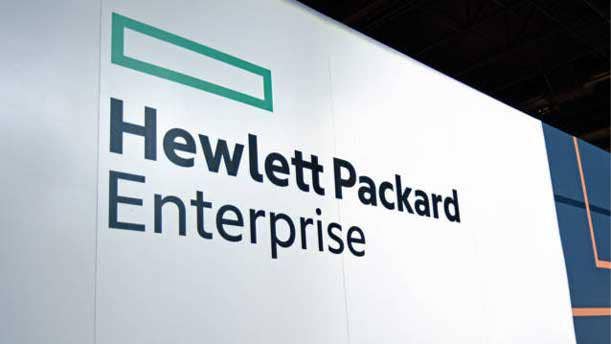
What is the HPE vision for using InfoSight in heterogenous environments?
The way we think about automation—which is similar to the way Gartner thinks about it—is you are observing the customer's environment. You are learning what the steady state behavior is and then you start to predict what the likely outcomes are going to be as you continue down that path, or does the customer need to do something proactively? We make recommendations based on those predictions. The only thing we don't do today is we don't act on behalf of the customer. The customer does have to do something when we alert them.
I would say in a relatively short term, "act" will become part of our vocabulary when we talk about InfoSight, initially on Nimble and then across the portfolio. So then what you will get is we will be able to do the simple updates that customers give us permission to go do. That means you are going to have a more efficient environment. That is where we are taking the core, base technology.
We and a lot of others out there support an API [Application Programming Interface] called Red Fish [a standard RESTful API for managing scale-out servers]. What Red Fish allows you to do is to interrogate any platform that supports Red Fish. Dell is involved in the Red Fish initiative along with us and a host of other people. Given the fact that people are starting to talk about Red Fish, we can then bring in heterogenous information and start to use that to inform our customers.
One day you may see us do the same thing we are doing to VMware today to the other three or four major applications that are out there that make up 80 percent of the customer's ecosystem.
The vision doesn't stop with the infrastructure that HPE provides. We want to be able to glob on to the infrastructure that we even don't provide, and Red Fish is a way for us to do that.
At a high level, the true value is how do we start providing the application environment that is the most efficient. The only way you can do that is to gather that telemetry from the application layer and compare that to others in the industry and then start to make value assessments based on that. We have a very strong position in SAP HANA and there are other applications that we can plug into and provide data to the customer.
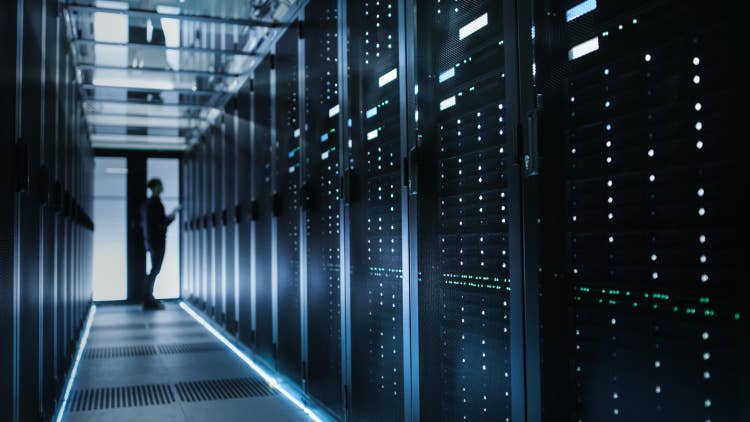
Can you talk about the HPE data management strategy?
The data we are collecting from InfoSight gives us a unique set of advantages about how customers are using the data. If you look at the total working set of our customers, the actual live working set versus the data that is on disk is relatively small. So can we use that information that we are collecting to create more intelligent caching capability, Rather than using LRU [Least Recently Used] cache we could use something that is more specific to the application. Can we based on the data that we have collected decide where to share the data—decreasing the size of the working setup on the most expensive flash or NVMe storage and parking the rest on much more economical storage? Can we position the data between your on-prem capability and DevOps capability that is in the cloud? All that comes from the rich collection of telemetry that we are already pursuing and collecting. That is the advantage point we have.
Let's also remember that data isn't all going to be in the data center anymore. By 2025 upwards of 80 percent of the data will be generated outside of the data center, whether it is IoT or autonomous vehicles or factory floor automation and you can't simply bring all that data back to the data center to be analyzed and shot back. The data management part of the strategy is IoT edge capability that [HPE CEO] Antonio [Neri] has talked about. We have invested $4 billion into that. The rule of law there is you can't bring the data to compute. You have to bring compute to the data. An average car will take terabytes of data off of it. You cannot simply get that information off the vehicle and up to some core data center. That has got to be processed at the edge. So part of the InfoSight vision is not only how do automate what is in your data center, but how do we sort of extend those models that we have developed that are in your data center and then push them to the edge so they can be acted on locally with only the necessary information sent back to corporate based on what the customer is seeing?

How do you feel about the progress you have made driving InfoSight across the storage and server stack?
I never think we work fast enough. But if you look at where we are relative to our competition and the feedback we are getting from customers, they are telling us we have made a lot of progress and we are maintaining our leadership in a category that frankly wasn't a big category prior to the [HPE] acquisition of [InfoSight with] Nimble [in 2017]. I'm never happy but I am really pleased about our internal efforts.
How big an impact is it having on channel partners and the sales team?
In a world where things tend to commoditize over time and all the PowerPoints start to look the same with people just changing the company logo, this is something we have trained our field on as absolutely a unique set of innovation that we continue to drill into. We promised that we would take it across the portfolio. We were showing this in the NDA [non-disclosure agreement] booth at the June Discover and now we are delivering it at the Madrid Discover [in two weeks]. I think the customers and the sales guys are really pumped about it.
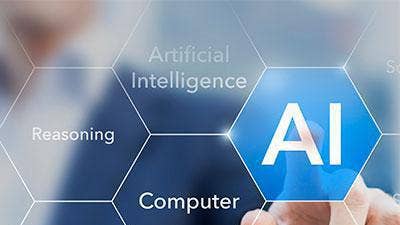
How big a deal is the 10 years of predictive analytics that InfoSight has already built up as part of its AI recommendation engine?
I don't mean this in a flippant sort of way, but anybody can collect data. What differentiates a collection of data to determine an outcome is a couple of things: The data that you get back has to be relevant. We have 5,000 sensors in a Nimble box. We have equally as many sensors in a 3Par box and a growing number of sensors within the server platform. You have to send the right data home, number one. Today we ship between 6 to 8 terabytes of data home on storage. That is 3 to 4 petabytes of data per year that we are collecting. Beyond the right data you have got to have a corpus of the data to look for trending within your customers based on application variations and configuration variations, etc. All of those things you have got to have a corpus of data. You can't just get that by deciding to ship data home day one. Then you have got to have data scientists, people that are employed that are only looking at trending information. This is not about customers calling us up with a problem. It is about things where customers don't realize they have a problem. So we deploy AI models that you could find at any AI shop.
We actually resemble what our customers are using our hardware for in building AI and it gives us a certain amount of credibility. When we go talk to customers about AI we are actually doing it internally.
If you add those things up it is the right data, the corpus of data, people employed to determine outcomes for customers and then the real results customers are receiving. That is the unique differentiator of what we provide versus anyone else.
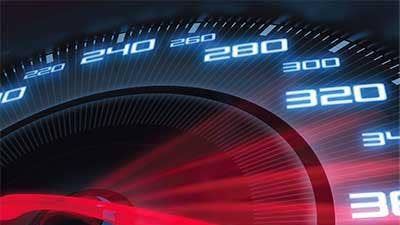
What investments do partners need to make to drive the InfoSight sales effort even faster?
First of all, AI should be a part of every conversation with customers. Number two, they need to get customers to deploy InfoSight across the board and get that data flowing home so that we can actually help them automate and improve the experiences of customers. Number three, they just need to be fluent in InfoSight. When I have a problem like a foot ailment, I will call my doctor up. It is pretty infrequent that my doctor calls me up even though I wear a Fitbit and that data is sent to the doctor. Partners can actually go look at InfoSight data that is at their customer's site and find out interesting outcomes that have not occurred to the customer or the customer has not seen. Then the partner can deliver value-added services they are not doing today.
So to repeat: Talk about AI and InfoSight at every sale, make sure the telemetry is coming home, and become well versed in InfoSight. It is a way for partners to make their customers more successful because it gives them information the customer may or may not know they have. It allows partners to be more proactive in customer environments.